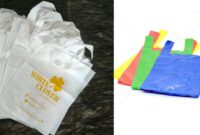
The Film Of”The Burmese Harp”
The Burmese Harp is a 1956 anti-war black and white film directed by Kon Ichikawa. During the Second World War, a group of Japanese soldiers came to Burma and filmed in Burma. A1 (A1) movie helped for shooting scenes in Burma. The film introduced director Kon Ichikawa to the world and was an Oscar finalist. In 1985, the above director made a color remake using new actors.
Brief story
Warrant Officer Mizushima is from Captain Inouye’s army, and not only can speak Burmese fluently, but he looks like a Burmese person. In addition, he can play the Myanmar harp professionally. Mizushima used to sing on the harp while fighting on the Burmese battlefield not only to promote the morale of the platoon, but also to miss the motherland. The entire platoon heard that the Japanese had surrendered unconditionally in one village. Therefore, Mizushima decided to inform a Japanese unit that was still fighting on the mountain without knowing the news.

When the British gave a 30-minute truce, they went into the cave where the troops were hiding and persuaded them to surrender, but they refused. Therefore, when Mizushima displayed the white flag instead of that army, they misunderstood and beat them into oblivion and threw them in the cave. At the end of 30 minutes, when the British opened fire with heavy weapons, the entire army was decimated, and only Mizushima, who was left unconscious in the cave, survived.
Captain Inouye and the army thought Mizushima was dead and accompanied him to the prisoner of war camp in Mudon. Mizushima disguised himself as a monk and traveled on foot to reunite with his army at Mudon. Seeing the corpses of Japanese soldiers lying scattered all over the road, he thought it was his duty to give them a proper burial. Therefore, Mizushima came to Mudon, chasing and burying the corpses of Japanese soldiers who were dying along the way. However, at the end of Mudong, he did not want to return to Japan with his army, so he stayed in Burma as a peaceful Buddhist monk, burying the remaining bodies.



